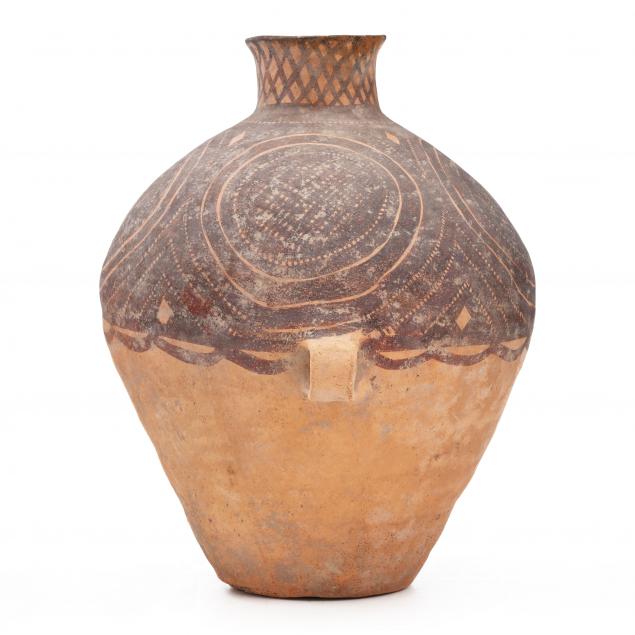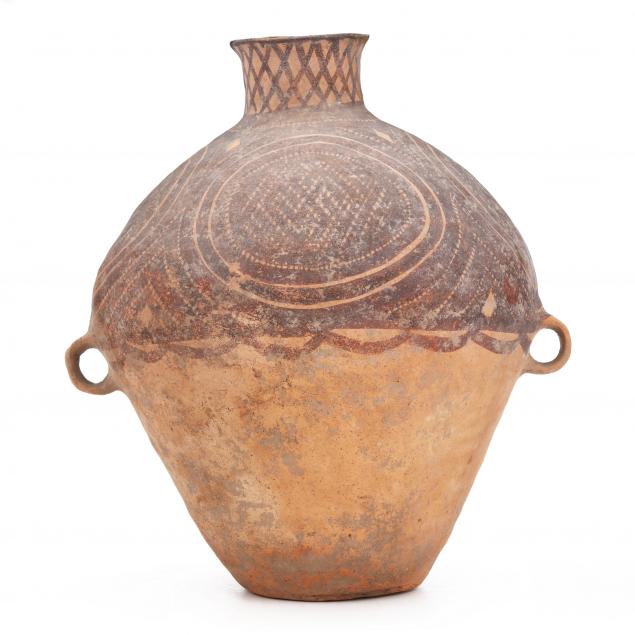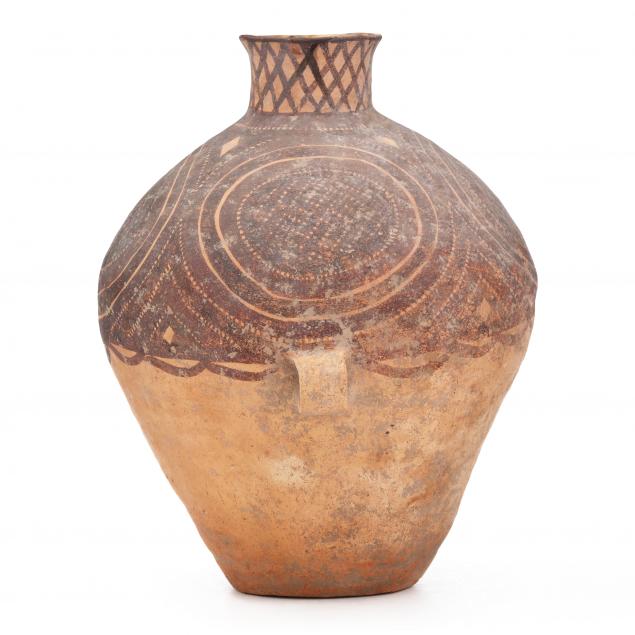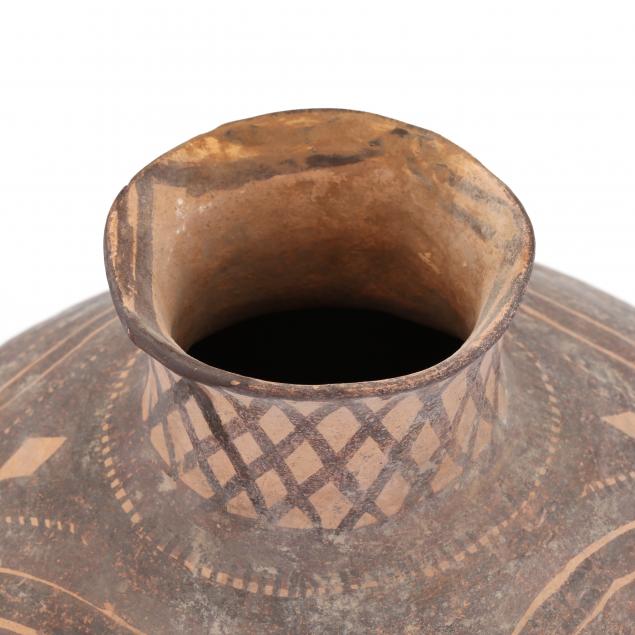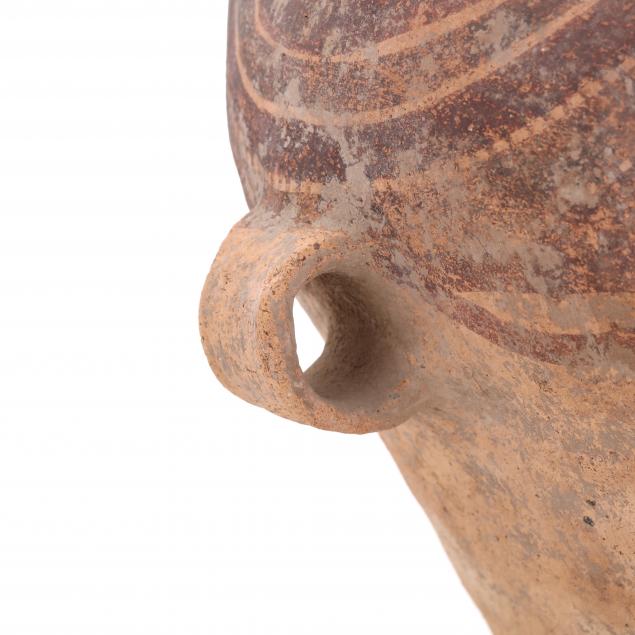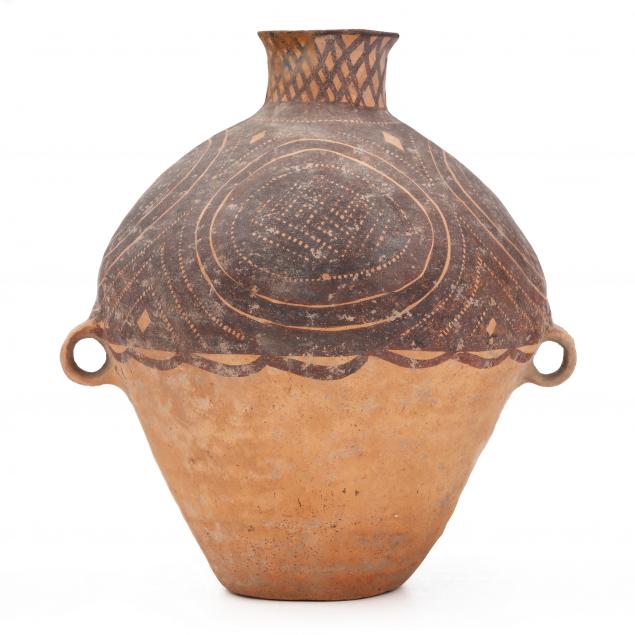
Lot 2003
A Chinese Neolithic Painted Vessel
Lot Details & Additional Photographs
16 in., 15 1/4 in. diameter
Property from the Estate of Joan Huntley, sold by the Ackland Art Museum to benefit the Robert and Joan Huntley Endowment Fund
The Yangshao culture, a neolithic Chinese society that lived along the Yellow River in what is today China’s Shaanxi and Henan Provinces between 5000 and 3000 BCE, together with the later Majiayao culture, which existed in today’s Gansu, Ningxia and Qinghai provinces, is best known today for its pottery tradition. Jars during the Neolithic period were constructed by coiling rolled clay that was then smoothed and shaped into a form with hand tools. Afterwards, a detailed line pattern was applied on the jar using a paintbrush with dark red, black and dark brown pigments. The lower body of the vessels were left unadorned likely because the vessels sat in sunken pits in the ground and only the top portion of the jar would have been seen.
Surface dirt and accretion, scattered surface scratches, small chips, and abrasions, scattered losses to pigment.
